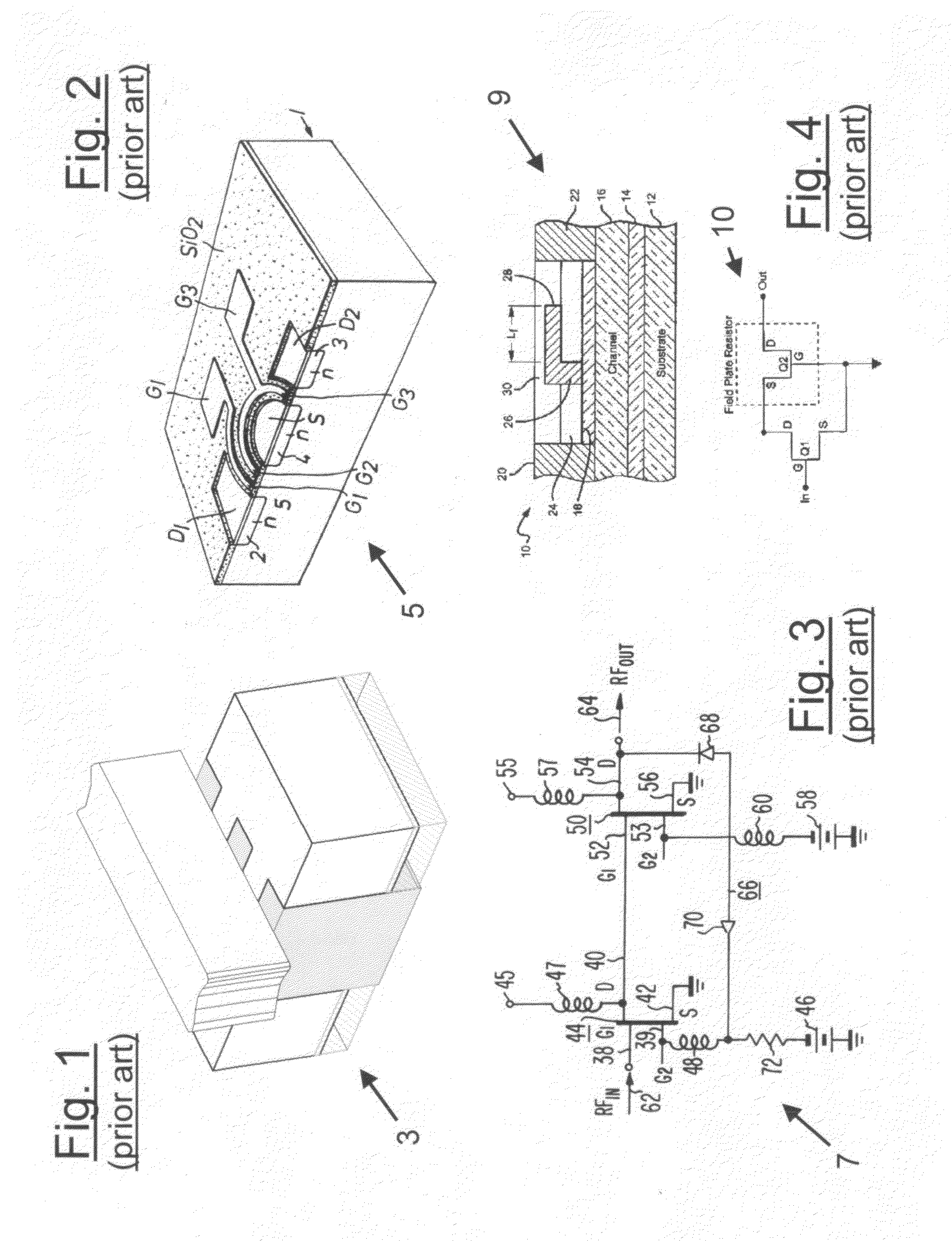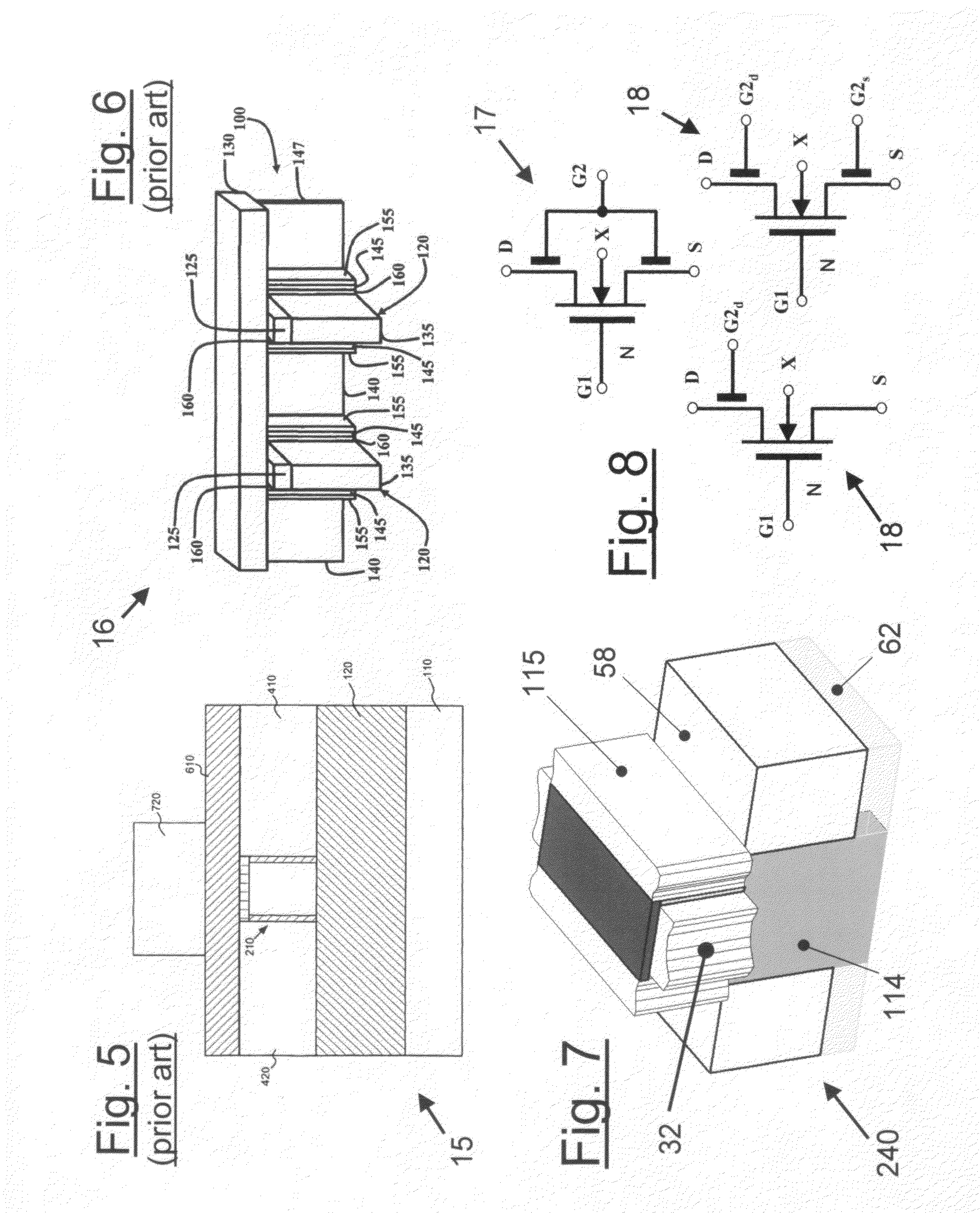Castellated gate MOSFET tetrode capable of fully-depleted operation
a mosfet transistor and channel structure technology, applied in the direction of transistors, semiconductor devices, electrical equipment, etc., can solve the problems of low power consumption of digital functions, under-performing thin-oxide core devices in speed/bandwidth, and reducing the performance of solid-state rf power amplifiers. performance
- Summary
- Abstract
- Description
- Claims
- Application Information
AI Technical Summary
Benefits of technology
Problems solved by technology
Method used
Image
Examples
embodiment 250
[0069]FIGS. 10 and 10A illustrate a second device embodiment 250 of the disclosed device invention using a starting substrate 78 which has a dielectric layer 77 in a lower portion. A Silicon-On-Insulator (SOI) wafer would be an example of such a starting substrate, and can be produced using a variety of methods. Note that the device mask layout remains substantially the same as the case of the device 240 with the bulk starting wafer 21 shown in FIGS. 9-9A. Substantially similar to the bulk silicon substrate device 240, the device 250 includes a plurality of adjoined primary and secondary silicon channel elements 22,23 that span the distance between a source region 24 and a drain region 26. These primary and secondary channels are controlled by first and second pluralities of gate elements 30,111, respectively, which are separated from the channels using first and second gate dielectrics, 84,85.
[0070]As shown in FIG. 10A, the dielectric layer 77 of device embodiment 250 is spaced bel...
embodiment 260
[0082]Contact formation and wiring steps are now performed in the usual manner known in the art to create circuitry, with the resulting final structure illustrated in FIGS. 9 and 9A. It should be noted at this point that if a SOI wafer is used as a starting substrate, the same process steps summarized in FIG. 12, along with masking layers shown in FIG. 9 (and repeated in FIG. 10), are used to create the structure illustrated in FIGS. 10A and 10B. Similarly, the fabrication sequence of FIG. 12 can be used with the spacer formation in procedure 616 omitted to produce the embodiment 260 of FIG. 10C. In this embodiment, the secondary channels of the integrated cascode have been replaced with gated resistors 23′.
Method 2
[0083]Other embodiments of the device constructed in accordance with the present invention can be produced using a second fabrication sequence. In this sequence, a procedure is incorporated whereby a composite gate structure is formed consisting of the first gate, as well...
PUM
 Login to View More
Login to View More Abstract
Description
Claims
Application Information
 Login to View More
Login to View More - R&D
- Intellectual Property
- Life Sciences
- Materials
- Tech Scout
- Unparalleled Data Quality
- Higher Quality Content
- 60% Fewer Hallucinations
Browse by: Latest US Patents, China's latest patents, Technical Efficacy Thesaurus, Application Domain, Technology Topic, Popular Technical Reports.
© 2025 PatSnap. All rights reserved.Legal|Privacy policy|Modern Slavery Act Transparency Statement|Sitemap|About US| Contact US: help@patsnap.com



